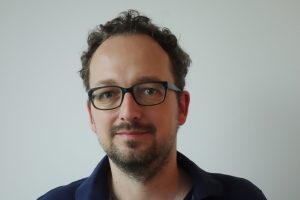ISSP Stay Report from Dr. Ingo Salzmann

Concordia University (Montreal, Canada), Department of Physics and Department of Chemistry & Biochemistry
My stay at the ISSP from September 2017 to the end of the year was the longest time I had the pleasure to spend in Japan, a country that fascinated me since I first stayed for three months at Chiba University in the group of Prof. Nobuo Ueno almost ten years ago. Apart from a deep personal interest in the Japanese culture and an affection towards its aesthetics and nature, I experienced the culture of science as practiced in Japan to be outstanding in terms of thoroughness and desire for perfection, which I regard as key virtues for successful fundamental research. Since then, several more stays in Japan for conferences and experimental work at the Synchrotron radiation source UVSOR (Institute of Molecular Science, IMS, Okazaki) in collaboration with Prof. Satoshi Kera (IMS) and Prof. Steffen Duhm (FUNSOM, Suzhou University, China), who visited me at the ISSP initiating a potential future collaboration with the group of Prof. Hatsumi Mori, fully corroborated this impression. In fact, my field of research addressing the physical chemistry of organic (semi-)conductors, their structural and electronic properties, as well as their application in organic and hybrid electronics, has a long and deep rooted tradition in Japan. Some of the most fundamental findings in this field do originate from Japan, be it, e.g., pioneering work in using photoelectron spectroscopy for assessing the electronic structure of organic solids, or exploring their superconductivity.
It was likely this tradition in the research on organic electronic materials together with my own positive experience with doing science in Japan, which led me to the ISSP as a Visiting Professor. There, I have been hosted by Prof. Hatsumi Mori and Prof. Jun Yoshinobu, two outstanding scientists in closely related fields of my research. The schedule of my stay at the University of Tokyo was insofar ideal, as it lay at the interface between my time at Humboldt University (Germany) and Concordia University in Montreal (Canada), where I took a position as faculty member by 2017. As I was invited by Prof. Takehiko Mori during my time at the ISSP to give a seminar at the Tokyo Institute of Technology, I could literally observe abovementioned tradition, as he showed me an old photo of the pioneering times of research on organic (semi-)conductors, showing himself together with Prof. Hatsumi Mori, Prof. Ueno, Prof. Seki, only to name a few – a snapshot of an emerging field. Further, I participated at the 5th Ito International Research Conference “Forefront of Molecular Dynamics at Surfaces and Interfaces: From a single molecule to catalytic reaction”, which has been organized by Prof. Jun Yoshinobu and which allowed me to broaden my knowledge on this topic by experiencing exciting talks and a poster session with vivid discussions not only on my own contribution. Moreover, during my stay I organized a symposium on “Organic Semiconductors: Surface-, Interface-, Bulk-Doping and Charge Transport” at the Fall Meeting of the American Materials Research Society (MRS) in Boston, USA, to which Prof. Hatsumi Mori accepted my invitation and presented an invited lecture on her related research. Apart from the less appealing travel time of around 12h to Boston (luckily served by a direct flight service from Tokyo), this very meeting offered the opportunity for thorough scientific discussions and for broadening our scientific network.
Although clearly limited in time, my stay at the ISSP was not only characterized by fruitful scientific exchange – mainly through discussing our current research projects and exploring synergies for future collaboration, but also by joint experimental work. Employing her expertise in cultivating and characterizing the solid state of organic (semi-)conductors, Prof. Mori pushed forward the structure solution of Dioctadecylamine, for which I could grow highly crystalline thin films that proofed to significantly reduce the work function of various substrates, a functionality highly desired for reducing energy barriers at organic interfaces to low work-function electrodes in electronic applications. While this project still represents ongoing work, significant progress has been made at the ISSP in growing single crystals of this promising compound. Based on available synchrotron data which I acquired during a stay at the BESSY II synchrotron (Berlin, Germany), correlating molecular orientation with the dipolar surface termination in thin films might allow rationalizing the observed impact on the work function in a future joint publication. Furthermore, I could successfully use my stay to co-author a publication (affiliated to the ISSP) on a related topic, which recently appeared as: Hofmann et al., The Journal of Physical Chemistry C 121, 24657 (2017).
Apart from science, I would like to gratefully acknowledge all the support and the perfect organization of my stay, which I had the pleasure to experience. Amongst the numerous colleagues, which made my time in Japan a great period of my life, I would like to explicitly thank Ms. Akiko Kawai, secretary to Prof. Mori, as well as the highly professional and cordial support by the International Liaison Office (ILO) at ISSP. In particular, Ms. Yuko Ishiguchi of the ILO has not only always been there to support in situations where challenges arose to the non-Japanese, but also impressively anticipated such situations in advance. My living in the International Lodge was further a great experience, which was perfectly organized in all details by Ms. Ishiguchi and made me immediately feel at home in Kashiwanoha. Finally, great experiences gathered in my spare time, where I could practice Aikido in the famous Hombu Dojo in central Tokyo (including a visit to the Aiki-shrine in Iwama), trips to the marvellous surrounding of Tokyo in its colours of Fall, as well as all the versatility and complexity of the Japanese cuisine (where certainly “omakase” became one of the most important terms to know) complement a both personally and professionally highly productive time of my life. It will be my pleasure to return to Japan as soon as possible.
